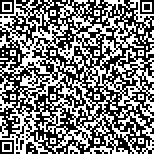| 本文已被:浏览 1026次 下载 409次 |

码上扫一扫! |
|
|
| 空气驱油可燃气体爆炸安全风险分析 |
|
曾文广1,2,葛鹏莉1,2,肖雯雯1,2,刘青山1,2,闻小虎1,2,史宝成3,胡姿铭3
|
|
1.中国石油化工股份有限公司西北油田分公司 ;2.中国石油化工集团公司碳酸盐岩缝洞型油藏提高采收率重点实验室;3. 长江大学石油工程学院
|
|
| 摘要: |
| 目的目前,安全问题仍然是限制空气驱大规模应用的主要原因,为此进行了针对其爆炸极限计算方法的研究。 方法通过对6种可燃气体的单组分计算方法、单组分文献值与2种多组分计算方法进行组合,得到了14种计算组合,将其与国内某油田3口井的爆炸实测值进行比较,以判断哪种组合适应性最好。 结果含碳原子单组分燃气计算法与多组分燃气计算中查图-理·查特里修正法组合得到的计算结果整体误差相对较小,更符合爆炸极限实测值。 结论可为C1~C3轻烃体积分数达90%以上的井流物的爆炸极限理论计算方法的选择提供参考。 |
| 关键词: 空气驱 可燃气体 爆炸 安全风险 惰性气体 |
| DOI:10.3969/j.issn.1007-3426.2024.03.020 |
| 分类号: |
| 基金项目:国家自然科学基金面上项目(51974033);油气藏地质及开发工程全国重点实验室开放基金(PLN2023-11);吉林省智慧管道与流体力学重点实验室开放基金(IPFM2022-04) |
|
| Safety risk analysis of air flooding oil combustible gas explosion |
|
ZENG Wenguang1,2, GE Pengli1,2, XIAO Wenwen1,2, LIU Qingshan1,2, WEN Xiaohu1,2, SHI Baocheng3, HU Ziming3
|
|
1. Sinopec Northwest Company, Urumqi, Xinjiang, China;2.Sinopec Key Laboratory of Enhanced Oil Recovery in Carbonate Fractured-vuggy Reservoirs, Urumqi, Xinjiang, China;3. School of Petroleum Engineering, Yangtze University, Wuhan, Hubei, China
|
| Abstract: |
| ObjectiveAt present, the safety issue is still the primary reason limiting the large-scale application of air flooding. Therefore, the calculation method of the explosion limit of air flooding was used in this study. Methods Through the combination of the component calculation method of six kinds of combustible gases, literature value of single component gases and two kinds of multi-component calculation method, fourteen kinds of calculation combinations have been obtained. The calculation results of various combinations have been subsequently compared with the explosion-measured values of three wells in a domestic oilfield to determine which combination has the best adaptability. ResultsThe overall error of the calculation results obtained by combining the carbon atom single component method and checking the figure-Le Chatlier method was relatively good, which was more consistent with the measured value of explosion limit. ConclusionThis study provides a reference for selecting theoretical calculation methods for the well fluid gas explosion limit with the volume fraction of C1-C3 light hydrocarbon content of more than 90%. |
| Key words: air flooding combustible gas explosion safety risk inert gas |